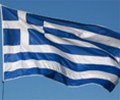
Core inflation came in below expectations
US consumer price inflation was 0.4% month-on-month/2.9% year-on-year for headline prices and 0.2%/3.2% for core inflation (excluding food and energy). The figure was in line with expectations, but the core interest rate was slightly better than the expected 0.3% Monthly interest rate – it turned out that the core interest rate was 0.225% to 3 decimal places.
The breakdown shows food prices rose 0.3% MoM, which we expect to be higher given the movement of egg and vegetable prices in the PPI in recent months, with energy prices rising 2.6% MoM. In terms of the core level, vehicle prices are hot with new vehicles seeing price increases of 0.5% MoM while used vehicle prices rose 1.2% MoM. Airline fares have also risen sharply, as reported in yesterday’s PPI report. However, this was offset by some lower medical care related cost increases (0.2% MoM versus 0.4% in recent months) while the all important home rental component was recorded at 0.3% MoM, which was more in line in the long term. trends and suggest ongoing normalization. This is big news considering their high weighting in the CPI basket. The hotel rates were also much quieter than we thought.
Three rate cuts by 2025 remain our call, but may come later
Federal Reserve rate cut expectations in markets have moved slightly dovish on this, estimating cuts of around 40bp this year, but 10-year Treasury yields are 10bp lower. We have forecast three rate cuts of 25bp this year and we are sticking to that view for now. However, it is possible that this will happen rather than a cut in March as we estimate that the first move in 2025 will most likely occur in June given the current data. The chart below is the core CPI based on different metrics. Focus on the blue bar, which is MoM. We need to see an average of 0.17% MoM (black line) to be confident that the annual core inflation rate is on track towards the 2% target. We’re still too hot to be comfortable – therefore it’s likely the Fed’s pause will be extended well beyond January unless we soon see the blue line go below the black line.
That said, a surge in the trade-weighted dollar of almost 10% since September and a spike in Treasury yields (still up more than 100bp since September despite today’s move) will act as headwinds to growth – note that mortgage rates are back above 7% and credit card borrowing costs are still near all-time highs – and will also help dampen inflationary pressures. This would give the Fed greater scope to respond by lowering interest rates in the second half of 2025.
Source: ING




